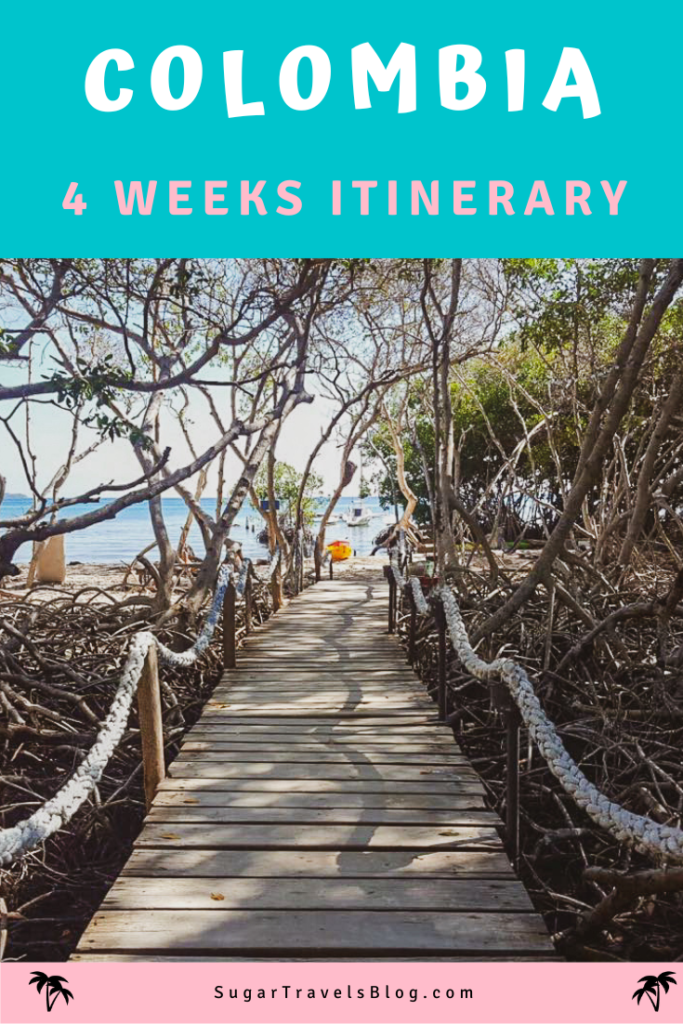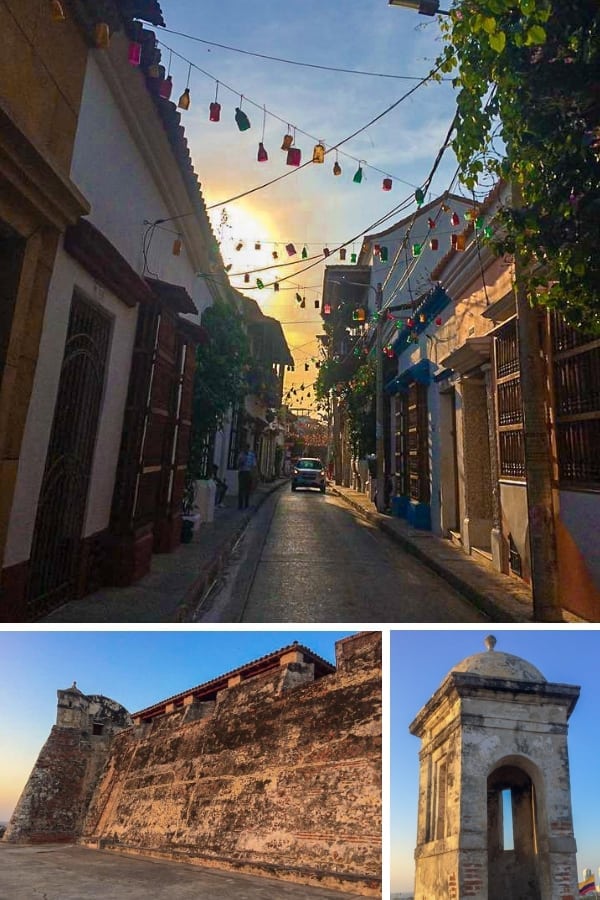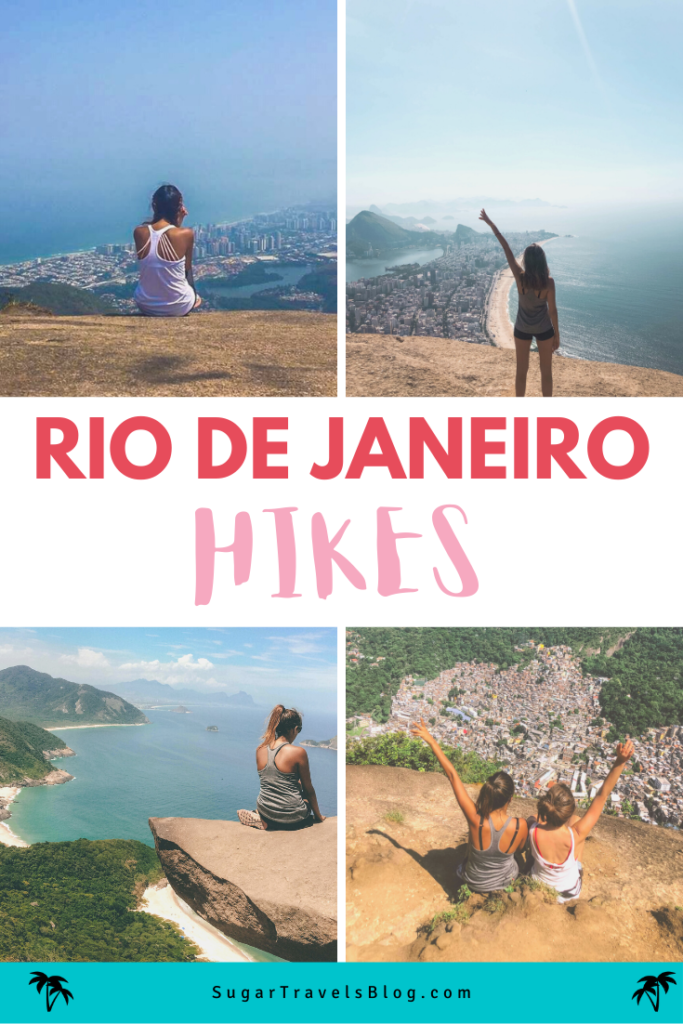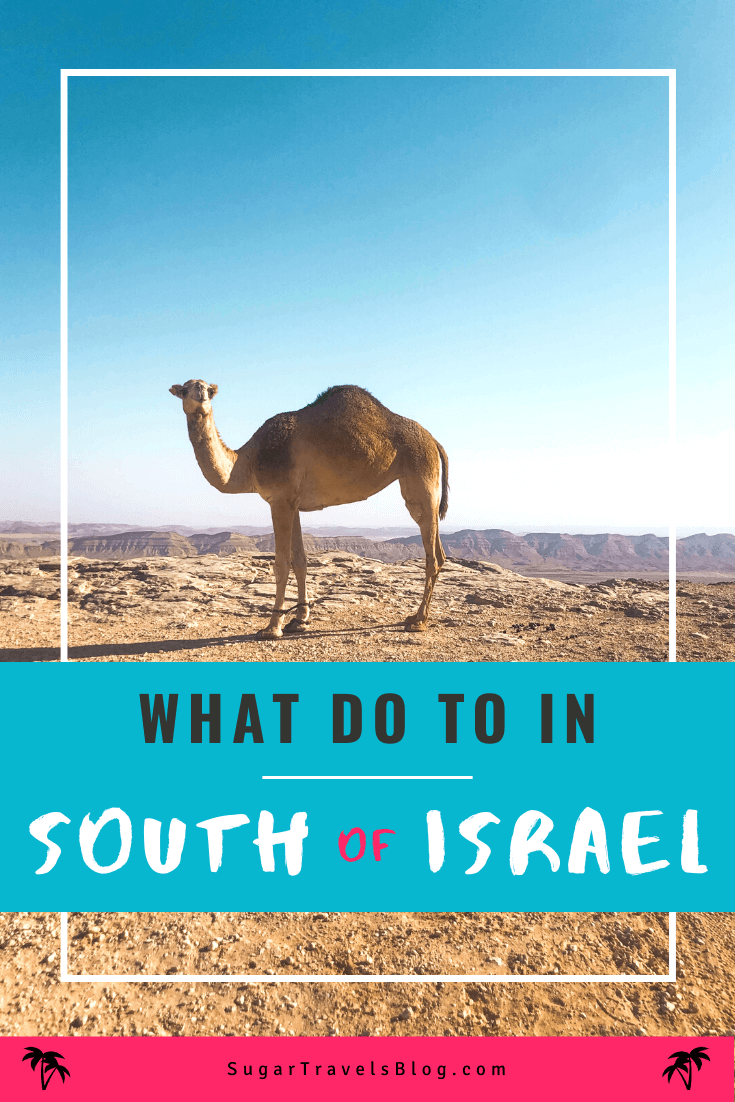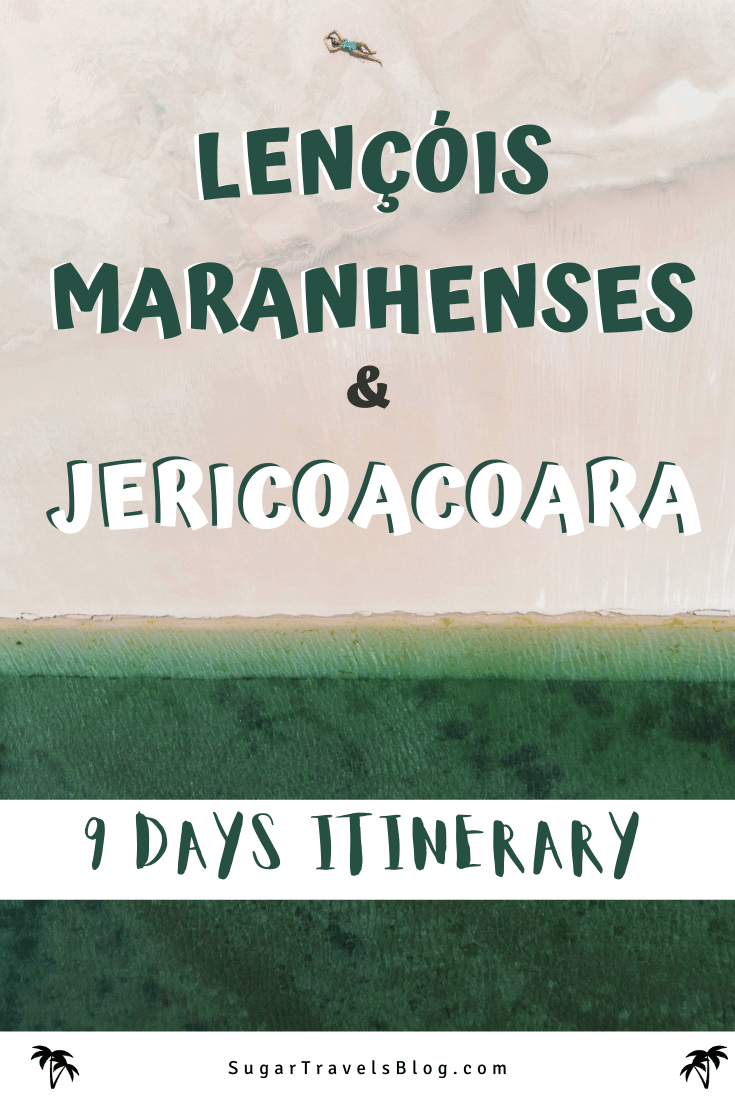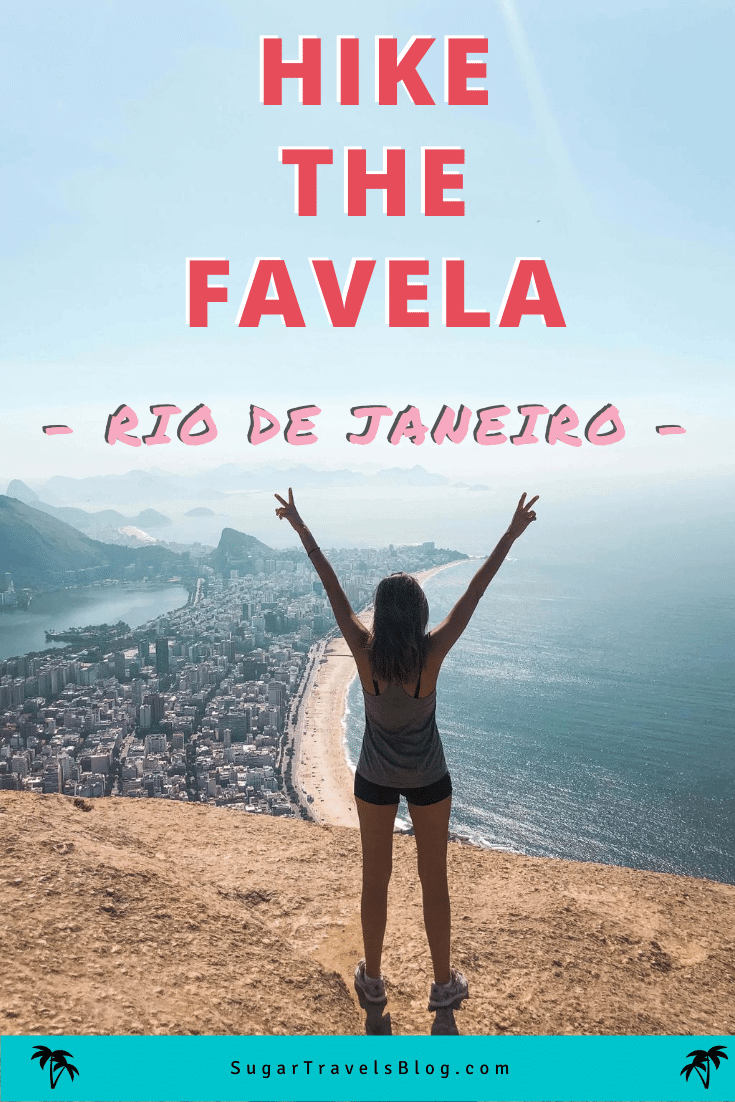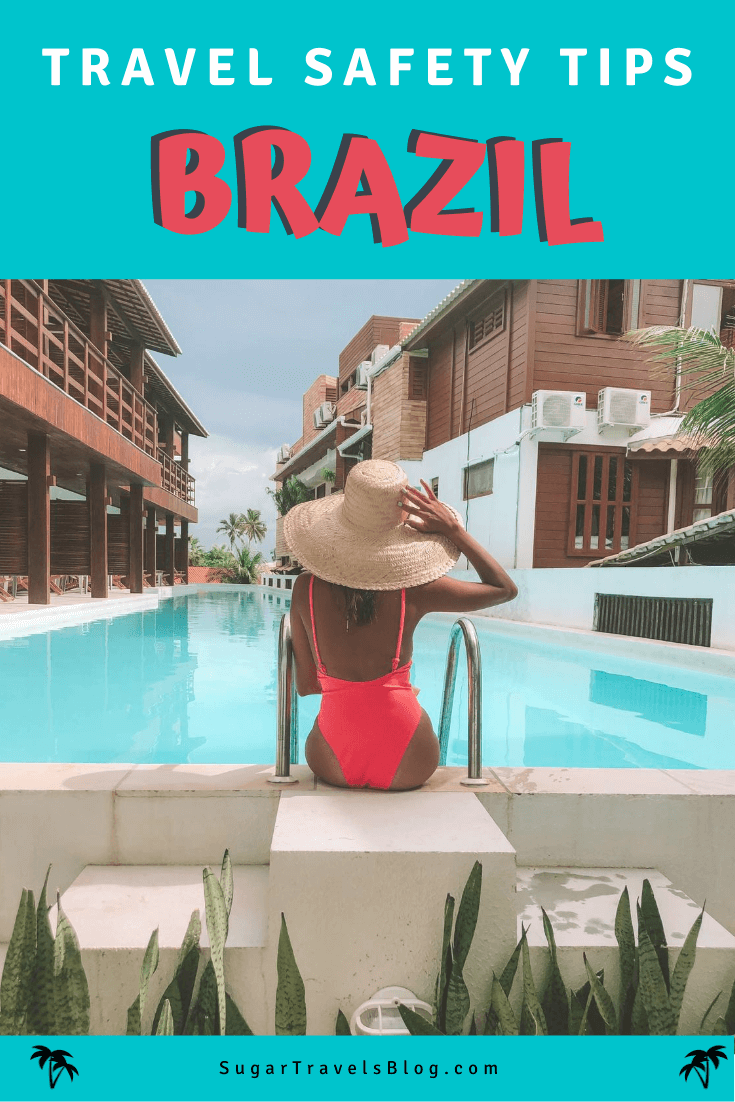I was hesitant about my decision to do a solo trip to Colombia but it quickly became one of my favorite destinations in Latin America! Here’s a summary of my month-long trip.
I was studying in Brazil for 5 months when I decided to travel to Colombia alone. I had a month between the semester ended till Carnival began and wanted to get to know another Latin American country but Brazil (that felt like home by then).
The friends I made during my studies abroad couldn’t come with me and I was eager to travel. I’ve traveled alone many times before but once I got into different relationships I got used to traveling with another person. We usually stayed in expensive hotels and I felt like I’d forgotten what it’s like to stay in a hostel. I was 27 and felt like I’m too old for the hostel life. But just like on my first trip at 17 years old I decided once again to just ignore my inner fears and go for it.
The first step was deciding where to go. I knew I wanted to travel to another Latin American country but had no idea which one. After taking the weather factor into consideration and the fact that I had a month I decided to travel to Colombia.
I was eager to know more about this country. I watched the first seasons of Narcos and studied about Colombia a little bit but felt like I knew nothing about his place, its people, and its culture. I didn’t know what to expect and that just made it even more exciting! I learned more about this place during my month-long trip than throughout my academic career in Latin American Studies.
Taking this trip as a female solo traveler was the best decision I’ve made. I can honestly say I fell in love with Colombia like I thought I never could after my long-lasting romance with Brazil began.
Here are my recommendations for the places to go, transportation, hostels and main activities in Colombia. These are based on my experience as a solo female traveler (that speaks Spanish and is a social butterfly) but are basically relevant to anyone who wishes to stay in hostels. Alongside my recommendations, you can find some of my mistakes and things that I would recommend not going.
First here are some things you need to know about Colombia.
There’s more to Colombia than Pablo Escobar and the infamous drug wars. Colombian are by far the nicest people I’ve met in Latin America. They are so polite (and not like fake and phony but sincerely nice) and very welcoming.
Spanish in Colombia is probably the most understandable for non-speakers. That makes it a great place to study Spanish or practice what you already know.
Weather: the wet season is between August- December and the dry season is from January- July. With that being said Colombia is huge so don’t expect the same weather everywhere. I traveled there during the month of January and the weather was perfect. Bogota and Salento are generally colder (I had to wear a jacket during the day) and Cartagena and the Caribbean area are more tropical.
Safety:
Colombia has an infamous past due to the cartel wars of the last decades of the 20th century and many travelers might avoid it due to its reputation as dangerous. This is a misconception. Yes, Colombia certainly has had a bloody period in its past (but then again what country hasn’t?) but today, especially after the peace deal signed by the Colombian government and the FARC (in late 2016) Colombia is considered extremely safe!
While the Cartel Wars are done, Colombia is still associated with drugs and many travelers go there for the purpose of getting drugs. Know this: you might think, oh they’re so easy to get and everyone is doing it, but I met several people that were busted by the police with drugs. Yes, most of the time they got out without getting arrested (by paying off the police officer- which can be pricey!) but it’s not a nice experience, to say the least. So, you’re gonna do what you’re gonna do but try and stay safe.
Female travelers:
Yes, you might experience some catcalling but that happens in many other places (including NYC, so…). In Medellin or Cartagena, for example, you can safely walk around at night in the touristic areas of these cities (whereas in Brazil you cannot).
Transportation:
Flights in Colombia are super cheap but some people don’t even imagine how low can flights get and take a bus. That would be a huge mistake. My flight from Medellin to Cartagena was 30$ (USD)!!! make sure you check for flights (even at the last minute) before choosing a bus.
In the cities, Colombia has Uber, and prices in different places such as Bogota or Cartagena is very affordable. I would highly recommend using it. It’s safe and you know the price of your trip in advance.
Trip Summary:
I took the trip during the month of January
Bogota- 4 days (Casa Bellavista)
Salento- 3 days (La Serena)
Medellin- 8 days- La Playa
Satna Marta- 4 days- The Dreamer Hostel
Cartagena- 1 night
Rosario Islands– 3 days- Saman Hostel
Cartagena- 2 days- Friends to be Hostel
Casa en el Agua– 2 days
Cartagena- 2 days
Bogota
I stayed in Bogota for 4 days (got there at nighttime) and it was definitely too much. If you have the time, yes, spend a couple of days there but I would not stay any longer. The city itself was a bit greyish to my taste.
Where to stay in Bogota:
I stayed in Casa Bellavista hostel that is La Candelaria. This area is basically where everybody stays. It’s a few blocks from the main avenue and close to all the tours and attractions in the city.
The hostel was great. There’s a kitchen and they offer a free breakfast (not suitable for vegans). The hostel also offers a laundry service that will be the cheapest you will find in Colombia- for 2.000 pesos per kilo! It was quick and my clothes smelled great!
It had many common areas in which you can mingle with other travelers. The problem was those areas were close to the rooms and you could hear everything so if you wanted to stay up and party with the friends you met you had to keep it down and if you wanted to sleep you might have been walking up by others.
The reason why I loved this hostel is the workers that were very knowledgeable, friendly and helpful!
What to do in Bogota:
Graffiti tour– this tour definitely brought the city to life as far as I’m concerned. I took the tour advertised by the hostel and loved it. Behind the art painted on the walls of this city, there are powerful emotions and messages.
Cerro De Monserrate- you can also go by cable car to the Monserrate mountaintop. I arrived there after Christmas and New years so there were many tacky decorations at the top. It was nice to watch the city from above but it was a bit cloudy.
The one thing I enjoyed was having a drink (tea for me, wine for my friend) in the fancy restaurant on the top while watching the sunset. Since Bogota is extremely cheap we could enjoy this luxury. Still, this is not a “must” thing to do in Bogota as far as I’m concerned.
Walking tour- I also took a free walking tour of Bogota that I really liked mainly because of the part when the guide told us about the history of Colombia and Bogota. If you’re a history buff like me and like to get to know the place you travel to it’s a great option.
The best thing about Bogota for me was meeting some pretty great people that I saw again on my trip. One of those people was Jess, a Canadian girl with energy levels close to mine. Once I learned we share a birthday I knew we have to see each other again on this trip.
Transportation in Bogota: you can wander around in La Candelaria by foot and get to different places in Bogota by uber (that was extremely cheap!!!).
Salento
I went to Salento as I planned but extended my stay there in order to wait up for Jess (that went to the Black and White Carnaval in Pasto) so we can travel together. I think 3 days are enough for this beautiful village.
This picturesque village is located in the coffee region of the country and is the departure point for Valle de Cocora. Salento is also a vacation place for many Colombians which makes it touristic but not to the point where all you see are international tourists.
Salento is usually a pretty sleepy village but I stayed here during January 6 which is Dia de Los Reyes Magos or, the day of the three wise men, those that brought gifts after Jesus’s birth and appear at the nativity celebrations of Christmas. During those days, Salento came to life at night with different shows of Colombian music so it was quite the experience.
Note: if you’re getting there on those days or any other holiday, the place will be fully booked. You can try and call some places and ask if they’re actually booked or if they know of any other place that’s available. You can also just can there and people will offer you rooms or you will walk around town and see “vacancy” signs on the windows.
Where to stay in Salento:
I was lucky to find an amazing hostel/inn in Salento- La Serrana. They were fully booked but after reading about this place online I knew I had to stay there so I called them and they told me there’s room! They are extremely affordable but you get so much more than other places at the same price.
The hostel is located in the middle of green valleys and meadows. It’s about 10 minutes from the city center but I loved the walk since you have an amazing view and cows and horses.
La Serrena had great dorms, clean and spacious with big lockers and plugs around your beds so you can charge your phone. It also has a camping area in which people pay to park their van. The staff is very nice but most of them don’t speak English. But you can manage to understand each other trust me.
They offer an awesome free breakfast. You can choose from fresh fruit salad, eggs or pancakes and of course tea and coffee. It’s made on the spot right in front of you by two lovely ladies
The best things about this place are the people you will meet there. Yes, of course, each one has different experiences depending on who you meet but this place attracts a certain type of people that I found to be very interesting. It has great common areas and a kitchen that brings solo travelers together. Also, a few times a week it hosts a great communal dinner!
What to do in Salento:
Palmeras Hike at Valle de Cocora– this is the most famous touristic attraction in Slaneto that allows travelers to see the field with huge palm trees. The hike takes about 5 hours but after you reach the halfway point you basically walk down so that part is easy. still;, I normally don’t do hikes that are over 2 hours so this one was tough for me, especially since I hike with jess that was in top shape.
Because this hike takes a while you should leave early in the morning. You will have to go to the center of the village where you will see many jeeps that will take you to the trailhead.
The first part of the hike is tough because it’s muddy. Wearing rain boots is recommended but I was scared I would twist my ankle somehow (the hostel we stayed in sometimes let the guests burrow or rent rain boots). So I went on this hike with 3 pairs of socks, used them all after drowning in mud 3 times, and ruined my Nike shoes. After we were done with the muddy road we had to hike up the mountain which was difficult for someone like me. But I did it.
Once we were done ascending there was a stopping point and then you can choose to hike some more and get to the honeybee reserve but we chose to walk down since we were warned about the rain that was supposed to start.
The way down was beautiful, with hundreds of palm trees so tall they won’t fit in my pictures. When drops of rain started we started walking faster until we reached the bottom where jeeps were waiting. by the time we got on a jip was pouring heavily! I don’t want to imagine what would have happened if you had to walk in this rain. It would be probably impossible and we would have returned completely soaked.
If you don’t want to or can’t hike you can see the palm trees from the ending point of the hike. Another option is to hike while riding a horse. I highly suggest you avoid this option. The hike is so steep you cannot believe how the horses manage to hike on that road and you can tell they are in bad shape.
Transportation in Salento:
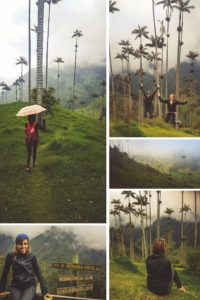 for rides around town are usually fixed and affordable.
for rides around town are usually fixed and affordable.How to get to Salento:
the best way to get to Salento is to take a flight to Armenia and then a taxi (it’s a 30-min ride). You can get there by bus by getting to either Pereira or Armenia by bus from any major city although I wouldn’t recommend it. The ride sometimes takes longer and the road is very curvy so I was swinging from side to side in my seat.
Medellin
What to do in Medellin:
Guatape- located outside of Medellin (1.5 hours bus ride) is the rock of Peñol. In order to get there, you can take a bus from the bus terminal (like we did) or take an organized tour from the hostel (I would recommend this option).
From the top of this rock, you will have a spectacular view of the meadow and the lake. You will have to about 600 steps to get to the top but it’s not as hard as it sounds since the steps have a rail and even kids walk up. You can have a fruit smoothie at the top and enjoy it. After going down you can eat at one of the restaurants by the lake.
Pablo Escobar Tour – Medellin is famous in the context of the drug cartels and Pablo Escobar. There’s even a neighborhood named Pablo Escobar (that he helped finance). For those of you who watched the show Narcos, I do feel that a tour of this side of Medellin would be not only interesting but important. What we all have to remember, (and this is a film student in me that is speaking), is that Narcos is highly subjective and essentially presents the whole period and the character of Escobar from an American perspective. The tour might show you another side.
There are several Escobar tours, a tour in a car for about 2 hours that take you to different places such as his neighborhood, where he’s buried, where he was found and shot, etc.
Another tour is the one that combines a visit to his mansion, a paintball battle, and the Guatape activity. I didn’t quite get the idea behind it so we chose the first one and got a private tour and learned a lot. In hindsight, I would choose this tour.
Plazoleta De Las Esculturas- another touristic attraction is to wander around Botero Square where you will find statues of Fernando Botero known for his chubby characters.
Metrocable– you can spend a few hours riding Medellin’s Metrocable which connects the poor neighborhoods of Medellin (perched on the hillside) and offers a stunning view from the top as well as along the ride.
Exotic Fruits Tour
This was one of my favorite tours in all of Colombia. The tour takes place in Medellin market and basically introduces you to about 18 exotic fruits. I loved it! You will try a tomato fruit (that is very common in Colombia) and one fruit that you have to open with a hammer in order to eat it! The majority of fruits you’ve never heard of or tasted so it’s definitely an experience.
In addition, you will try a traditional arepa made on the spot. It was the best Arepa I had in Colombia.
Shopping– if you’ve been traveling for a while or, like me, love shopping and you have some time on your hands, Medellin is definitely the place to get some shopping done.
Party– Medellin nightlife is one of the biggest attractions in the city. El Poblado area has a variety of bars and clubs and the main party hostel: Happy Buddha where you can party almost every day of the week.
For more things to do in Medellin you can go to Adi Sees World post.
Where to stay in Medellin:
It’s highly recommended to stay in the El Poblado neighborhood since this is where the hostels are, bars, restaurants, and the metro station.
We chose to stay at La Playa hostel. If you want a relaxed hostel but not be that far away from all the action this is the place for you. It’s right in front of the Happy Buddha so you can cross the road and have fun there and then go back to your quiet room and sleep tight so you will have the energy for all the activities Medellin has to offer.
This hostel also has such a pretty bar (Active till 11pm or something like this so the guests won’t be disturbed) and offers great pretty drinks.
A post shared by laplayahostal (@laplayahostal) on
Transportation in Medellin
If you stay in the El Poblado area you will most likely walk from place to place. If you need to get to different parts of the city, you can use the great Metro system or uber.
Cartagena:
Cartagena is the hottest city in Colombia without a doubt. This means 2 things: cold showers and limited time during the day for any activities since you can be out during the hottest hours.
What to do in Cartagena:
Visit the old city- the old city is surrounded by a wall and has colorful buildings, cute shops, and restaurants.
Castillo San Felipe de Barajas– this is a beautiful fort that gives you great views over the city and the port. It was a bit pricey but we went there anyway. I would recommend doing it only in case you have the time.
Nightlife– Cartagena has a variety of bars and clubs with different parties and music playing in each place.
What not do to in Cartagena
Playa Blanca– This beach is completely overcrowded. I was lucky I decided last minute I’m not going since I was coming from Brazil and had high standards as far as beaches go. If you have been to a great beach before, you won’t be too excited about this one.
Ciénaga del Totumo– This volcano has mud in it instead of lava and you can take a tour there and then enter a tiny mud pool with tons of people. You have about 2 people (men) that work there and will massage you or touch you regardless. You then have to go down to the river where they would wash the mud off you before you can take “a shower.” This experience was completely unnecessary for me. It was too touristic and I was not excited to see the male workers rubbing mud on some of the female tourists.
Where to stay in Cartagena:
Since Cartagena is so hot you might look for a place that has AC. Most hostels offer AC that starts working from the evening till the next morning. If you can’t handle the heat take a hotel.
We stayed in a beautiful hostel Freinds to be and they had AC from 6pm to 9am. The hostel was nice and had a small pool that was actually clean so we would chill there during the hottest hours of the day.
The hostel has dorms and private rooms (I would choose a private if you can because they’re pretty affordable for 2 people and absolutely beautiful). It has a great balcony on the upper floor and, like many other places in Cartagena, has beautiful high ceilings. Most importantly it’s right at the center of the city.
Traposration in Cartagena
Cartagena has uber but the taxi charges the same prices for drives around the city.
How to get to Cartagena
Flights to Cartagena are pretty cheap so don’t take a bus if it’s a long ride. If you’re getting from or to Santa Marta take a bus since it’s a 4-hour ride.
Santa Marta and Taganga
Santa Marta is the departure point for different touristic attractions in the area. The main one is the Lost City Trek (which I chose not to do). About 20 minutes next to Santa Marta is Taganga, a fishermen town. Taxies between both places are cheap so travelers can choose to sleep in either place.
Where to stay in Santa Marta
We chose to stay at The Dreamer Hostel, also known as the best hostel in Central America. The place is shaped like a courtyard with an awesome pool in the middle. It’s almost like the hostel version of a resort. The dreamer hostel is a great place to relax and chill after the lost city trek. After four days of sleeping in the forest, you deserve some pampering.
They have a great breakfast (for additional payment). I preferred just buying my fruits at the nearby supermarket (at the mall) and making myself breakfast. After breakfast hours they have a menu from which you can order great food. the best was their 1-liter smoothies made fresh for very few pesos. I loved chilling at the pool with these smoothies.
A post shared by The Dreamer Hostel (@thedreamerhostel) on
What to do in Santa Marta and Taganga
Watch the sunset– Taganga is known to have the best sunsets in Colombia. I would agree with that statement. If you’re coming from Santa Marta to watch the sunset there you should definitely leave an hour before. Right before sunset, everybody tries to get there, and since there is only one road that leads to Taganaga many get stuck watching the sunset in traffic.
Taganga Boardwalk- Taganga has a great boardwalk with souvenirs and restaurants.
Rosario Islands
We left for Rosario Islands from Cartagena. This was my absolute favorite place in Colombia. A must-do when you’re traveling to this beautiful country. Rosario islands were so amazing I dedicated an entire post to this place. Read it here.
Casa en el Agua
